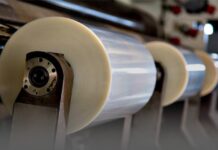Within the flexible packaging industry, the discussion of paper-based alternatives often becomes emotional. The proponents of flexibles cite various life cycle analyses to champion the superior properties and carbon footprint of flexible packaging over paper-based alternatives. They seem to ignore two basic facts – firstly, no matter what life cycle analyses indicate, the actual waste streams for paper-based waste in India are established while those for flexible packaging are not. It is not remunerative for waste collectors to make a living out of unsegregated flexible packaging waste. The second fact is the consumer perception that paper comes from renewable sources such as trees and waste paper and is more environmentally friendly overall – no matter how much energy or water is required to make it.
Although there are many discussions on how to add barrier properties to paper for packaging solutions that require these, and when paper-based packaging will replace some parts of flexible packaging, it will not go away. Industry experts say use cases will eventually migrate to India, and brand owners such as Nestle will eventually bring their flexible paper packaging for products such as chocolates here. Of course, many other industry experts see these as merely greenwash. Nevertheless, on the second day of the Elite Conference in Mumbai, two sessions on alternative materials addressed the paperization of flexible packaging.
The first session was moderated by Dhruv Shah, the managing director of the Prasad Group, with Ankit Jain senior vice president of supply chain at Flipkart presenting the Shaping of Sustainable eCommerce Packaging, and Christoph Wachter, director of Flexible Packaging at Koehler Paper, presenting his company’s developments of paper-based flexible packaging for which it is well known across the globe including markets such as Australia where it has championed paper-based tea packaging.
At their stand in the Elite networking space, Koehler and Indian distributor CH Java showed several samples of food products printed and converted in Mumbai. In addition, at the manroland Goss web stand was a sample of the frozen pizza packaging produced on the Varioman in Europe using Koehler paper.
Wachter’s presentation described Koehler’s commitment to sustainability and the developments of its substrates that together with new barrier coatings allow these to be used as an alternative for flexible films and laminates. He explained that the company’s monomaterial barrier papers have a low carbon footprint and are recyclable up to 25 times. As he said paper is the most recycled packaging material in the world with 85% of paper packaging recycled in Europe and Germany imported Koehler is based, importing 14% of its waste paper demand.
Koehler invested Euro 300 million in a new paper and coating machine at its Kehl site with a capacity of 120,000 tons which began producing its Nexflex papers in 2019. The machine can apply three coatings to the paper in a single pass. The inline functional coatings provide the barrier properties required, and the inline method controls the costs compared to other contemporary solutions while providing the sustainability of a single fiber-based material. The Nexflex products have also been engineered for optimal print and converting performance.
The use of specific coatings on the base paper can provide combinations of aroma, grease, oxygen, MOSH/MOAH, and vapor barrier as required in addition to coatings that provide printability, UV protection, and the heat sealability that is an essential part of flexible packaging operations. This flexible use of special pre–coatings and coatings allows the company to manufacture paper-based solutions for a variety of solutions for food and non-food applications.
Wachter showed several examples of tea packaging papers with barriers against mineral oil and grease as well as high oxygen and aroma barriers. His success story example of chocolates was a heat-sealable barrier paper with oxygen, mineral oil, and fat barrier. This paper is produced for cold seal adhesive applications.










